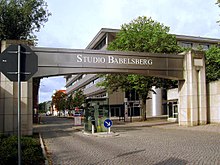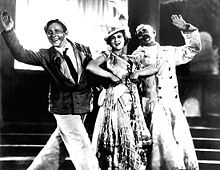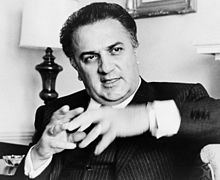
The cinema of France comprises the film industry and its film productions, whether made within the nation of France or by French film production companies abroad. It is the oldest and largest precursor of national cinemas in Europe, with primary influence also on the creation of national cinemas in Asia.

The cinema of the Soviet Union includes films produced by the constituent republics of the Soviet Union reflecting elements of their pre-Soviet culture, language and history, albeit they were all regulated by the central government in Moscow. Most prolific in their republican films, after the Russian Soviet Federative Socialist Republic, were Armenia, Azerbaijan, Georgia, Ukraine, and, to a lesser degree, Lithuania, Belarus and Moldavia. At the same time, the nation's film industry, which was fully nationalized throughout most of the country's history, was guided by philosophies and laws propounded by the monopoly Soviet Communist Party which introduced a new view on the cinema, socialist realism, which was different from the one before or after the existence of the Soviet Union.

The cinema of Italy comprises the films made within Italy or by Italian directors. Since its beginning, Italian cinema has influenced film movements worldwide. Italy is one of the birthplaces of art cinema and the stylistic aspect of film has been one of the most important factors in the history of Italian film. As of 2018, Italian films have won 14 Academy Awards for Best Foreign Language Film as well as 12 Palmes d'Or, one Academy Award for Best Picture and many Golden Lions and Golden Bears.

Vittorio De Sica was an Italian film director and actor, a leading figure in the neorealist movement.

Luchino Visconti di Modrone, Count of Lonate Pozzolo was an Italian filmmaker, theatre and opera director, and screenwriter. He was one of the fathers of cinematic neorealism, but later moved towards luxurious, sweeping epics dealing with themes of beauty, decadence, death, and European history, especially the decay of the nobility and the bourgeoisie. Critic Jonathan Jones wrote that “no one did as much to shape Italian cinema as Luchino Visconti.”

Italian neorealism, also known as the Golden Age of Italian Cinema, was a national film movement characterized by stories set amongst the poor and the working class. They are filmed on location, frequently with non-professional actors. They primarily address the difficult economic and moral conditions of post-World War II Italy, representing changes in the Italian psyche and conditions of everyday life, including poverty, oppression, injustice and desperation. Italian Neorealist filmmakers used their films to tell stories that explored the contemporary daily life and struggles of Italians in the post-war period. Italian neorealist films have become explanatory discourse for future generations to understand the history of Italy during a specific period through the storytelling of social life in the context, reflecting the documentary and communicative nature of the film. Some people believe that neorealistic films evolved from Soviet montage films. But in reality, compared to Soviet filmmakers describing the people's opposition to class struggle through their films, neorealist films aim to showcase individuals' resistance to reality in a social environment.

Social realism is the term used for work produced by painters, printmakers, photographers, writers and filmmakers that aims to draw attention to the real socio-political conditions of the working class as a means to critique the power structures behind these conditions. While the movement's characteristics vary from nation to nation, it almost always uses a form of descriptive or critical realism.

Bicycle Thieves, also known as The Bicycle Thief, is a 1948 Italian neorealist drama film directed by Vittorio De Sica. It follows the story of a poor father searching in post-World War II Rome for his stolen bicycle, without which he will lose the job which was to be the salvation of his young family.
Poetic realism was a film movement in France of the 1930s. More a tendency than a movement, poetic realism is not strongly unified like Soviet montage or French Impressionism but were individuals who created this lyrical style. Its leading filmmakers were Pierre Chenal, Jean Vigo, Julien Duvivier, Marcel Carné, and, perhaps the movement's most significant director, Jean Renoir. Renoir made a wide variety of films some influenced by the leftist Popular Front group and even a lyrical short feature film. Frequent stars of these films were Jean Gabin, Michel Simon, Simone Signoret, and Michèle Morgan.

Umberto D. is a 1952 Italian neorealist film directed by Vittorio De Sica. Most of the actors were non-professional, including Carlo Battisti who plays the title role of Umberto Domenico Ferrari, a poor elderly man in Rome who is desperately trying to keep his rented room. His landlady is evicting him and his only true friends, the housemaid and his dog Flike are of no help.

The Cinema of Portugal started with the birth of the medium in the late 19th century. Cinema was introduced in Portugal in 1896 with the screening of foreign films and the first Portuguese film was Saída do Pessoal Operário da Fábrica Confiança, made in the same year. The first movie theater opened in 1904 and the first scripted Portuguese film was O Rapto de Uma Actriz (1907). The first all-talking sound film, A Severa, was made in 1931. Starting in 1933, with A Canção de Lisboa, the Golden Age would last the next two decades, with films such as O Pátio das Cantigas (1942) and A Menina da Rádio (1944). Aniki-Bóbó (1942), Manoel de Oliveira's first feature film, marked a milestone, with a realist style predating Italian neorealism by a few years. In the 1950s the industry stagnated. The early 1960s saw the birth of the Cinema Novo movement, showing realism in film, in the vein of Italian neorealism and the French New Wave, with films like Dom Roberto (1962) and Os Verdes Anos (1963). The movement became particularly relevant after the Carnation Revolution of 1974. In 1989, João César Monteiro's Recordações da Casa Amarela won the Silver Lion at the Venice Film Festival and in 2009, João Salaviza's Arena won the Short Film Palme d'Or at the Cannes Film Festival. Several other Portuguese films have been in competition for major film awards like the Palme d'Or and the Golden Bear. João Sete Sete (2006) was the first Portuguese animated feature film. Portuguese cinema is significantly supported by the State, with the government's Instituto do Cinema e do Audiovisual giving films financial support.

My Voyage to Italy is a personal documentary by acclaimed Italian-American director Martin Scorsese. The film is a voyage through Italian cinema history, marking influential films for Scorsese and particularly covering the Italian neorealism period.

Miracle in Milan is a 1951 Italian fantasy comedy film directed by Vittorio De Sica. The screenplay was co-written by Cesare Zavattini, based on his novel Totò il Buono. The picture stars Francesco Golisano, Emma Gramatica, Paolo Stoppa, and Guglielmo Barnabò.

Terminal Station is a 1953 romantic drama film directed and produced by Vittorio De Sica and starring Jennifer Jones, Montgomery Clift, and Richard Beymer in his debut role. It tells the story of the love affair between a married American woman and an Italian intellectual. The title refers to the Roma Termini railway station in Rome, where the film takes place. The film was entered into the 1953 Cannes Film Festival.

Telefoni Bianchi films, also called deco films, were made by the Italian film industry in the 1930s and the 1940s in imitation of American comedies of the time in a sharp contrast to the other important style of the era, calligrafismo, which was highly artistic. The cinema of Telefoni Bianchi was born from the success of the Italian film comedies of the early 1930s; it was a lighter version, cleansed of any intellectualism or veiled social criticism.

The cinema of Romania is the art of motion-picture making within the nation of Romania or by Romanian filmmakers abroad. The history of cinema in Romania dates back to the late 19th century, as early as the history of film itself. With the first set of films screened on May 27, 1896, in the building of L'Indépendance Roumanie newspaper in Bucharest. In the Romanian exhibition, a team of Lumière brothers' employees screened several films, including the famous L'Arrivée d'un train en gare de La Ciotat. The next year, in 1897, the French cameraman Paul Menu shot the first film set in Romania, The Royal parade on May 10, 1897. The first Romanian filmmaker was doctor Gheorghe Marinescu. He created a series of medically themed short films for the first time in history between 1898 and 1899.

The Roof is a 1956 Italian drama film directed and produced by Vittorio De Sica.

The cinema of Moldova developed in the early 1960s during the Soviet period, experiencing a flowering of about a decade and a half. Stagnation followed, and after the Moldavian SSR became independent in 1991, the industry almost completely disappeared.
The 21st annual Berlin International Film Festival was held from 26 June to 6 July 1971. The Young Filmmakers Forum section was introduced at the festival.

Salvo D'Angelo was an Italian film producer. He also worked as an art director and production designer.
































